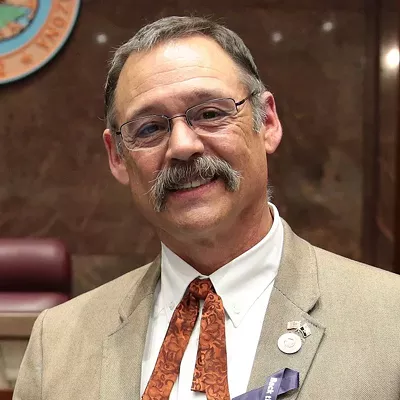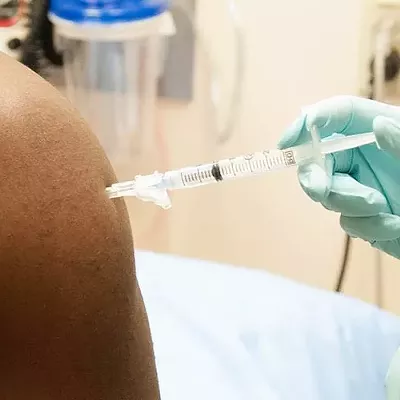Homeowners and business owners, the backbone of the system, have yet to be recognized even as they suffer from the highest property taxes of the 15 Arizona counties. And county officials can scarcely give credit to new houses and commercial development as well as, brace yourself, new car sales.
County Administrator Chuck Huckelberry provided ladders to lead supervisors out of the $75 million hole two years ago. His $842 million budget that year eliminated the deficit a year ahead of schedule and, just in time for four supervisors' re-election campaigns, froze taxes while giving cops, prosecutors and employees more money.
New home and commercial construction boosted the county's tax base that year by 5.41 percent to a record $4.06 billion and allowed for spending to jump 8 percent. Growth, Huckelberry said then, "has helped if you take the microscopic view."
Will Huckelberry take a macro view now?
Only reluctantly.
Proposing another plenty-for-everyone budget that touches $1 billion, Huckelberry belatedly acknowledges that supervisors have more money to spend because of a 7 percent increase in property tax value. The tax base is now up to $4.6 billion.
"Approximately 4.5 percent ... is attributable to new construction," Huckelberry told those who could wade through 17 pages of budget happy talk in his overview to supervisors.
Subsidies continue: roughly $15 million to the health system and $5.7 million at Tucson Electric Park and the baseball complex used by the Arizona Diamondbacks, Chicago White Sox and minor-league Tucson Sidewinders.
Taxpayers face a gauntlet of county taxes: primary for daily operations, secondary for voter-approved debt and distinct taxes for flood control, libraries and assistance to the profligate fire districts. Taxpayers won't get any relief in primary taxes under Huckelberry's budget plan that the Board of Supervisors is scheduled to review on July 9. The rate has been stuck since Democrats controlling the board approved an 11 percent increase in 1999 at a record-high primary rate of $4.07 per $100 of assessed value, or $407 a year on a $100,000 home.
Only fast-growing Pinal County has a higher primary rate, but Pima's combined rate--that slaps more than $550 onto the tax bill of a $100,000 home--remains the runaway leader. A similarly valued commercial property pays $1,375.
Pinal also helps provide an answer to Huckelberry and his Democratic majority--Sharon Bronson, Dan Eckstrom and Richard Elias--when they talk about the need for more sales tax. Pinal has two. Its property taxes are still high. And governments relying on sales taxes, such as Tucson and the state, are struggling because of the stalled economy.
Bronson, Eckstrom and then-Democratic Board Chairman Raul Grijalva levied Pima's increase to erase longstanding debt and annual operating deficits at Kino Community Hospital and other parts of the health system. Taxpayers were called upon to enable supervisors to repay $30 million borrowed from the county sewer department as well as the illegal use of money pooled from school districts.
The high tax rate, combined with new construction and higher home values, allowed an accelerated pay off. The continued expansion of the tax base now is allowing Huckelberry to offer homeowners a 1 percent break--a savings of $8 for the owner of a $100,000 home.
Finally, the county got a $250,000 boost to the budget from new car license revenues with another 8 percent increase expected next year.
Scratch Huckelberry's name.
Call it the Diamond-Click budget.









